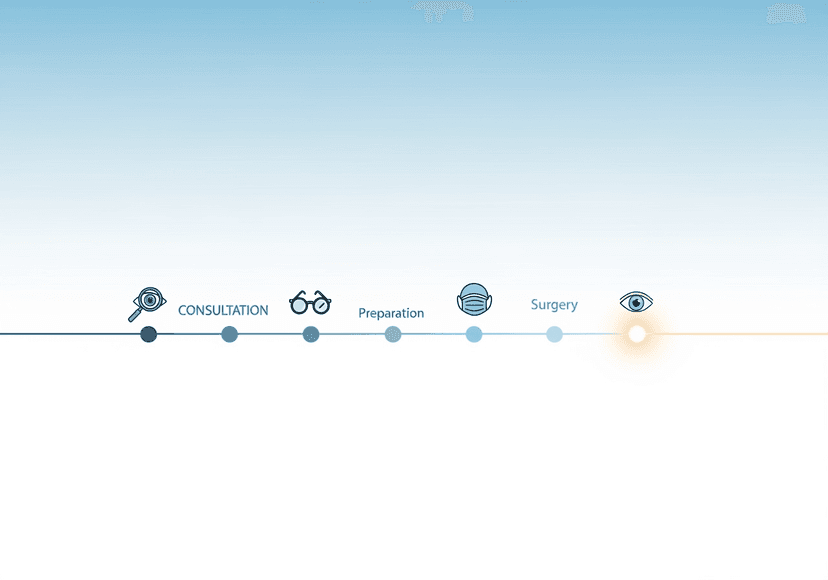
Brain Hemorrhage: Causes, symptoms, and interventions
09 Aug, 2023
 Healthtrip Team
Healthtrip TeamThe brain, our body's command center, is susceptible to various challenges, with brain hemorrhages being among the most severe. This sudden and often unexpected event can have profound implications. As we delve into its intricacies, understanding its causes and consequences becomes crucial. Join us as we explore this critical topic, emphasizing the importance of awareness and timely intervention.
Most popular procedures in India
Brain Hemorrhage
A brain hemorrhage, in simple terms, refers to bleeding within the brain. It's a serious medical condition that requires immediate attention. The brain, a vital organ, is cushioned by cerebrospinal fluid and protected by our skull. However, when blood suddenly starts to pool inside this protective casing due to a rupture in a blood vessel, it can lead to increased pressure on the brain, potentially causing damage to brain tissues.
Wellness Treatments
Give yourself the time to relax
Lowest Prices Guaranteed!

Lowest Prices Guaranteed!
Types of Brain Hemorrhage
Understanding the types of brain hemorrhages can help in grasping the severity and potential causes of each:
1. Intracerebral Hemorrhage: This is when bleeding occurs directly within the brain tissue. It's often caused by high blood pressure, trauma, or vascular malformations.
2. Subarachnoid Hemorrhage: This type of bleed happens in the space between the brain and the thin tissues that cover it. It's most commonly associated with a ruptured aneurysm and can lead to a sudden, severe headache.
3. Subdural Hemorrhage: Here, bleeding takes place between the brain's surface and its outer covering (the dura). It's often a result of head injury, especially in older adults.
4. Epidural Hemorrhage: This occurs between the outer layer of the brain and the skull. It's typically caused by traumatic injuries and can progress rapidly.
What Causes a Brain Hemorrhage?
A brain hemorrhage, or bleeding within the brain, can be triggered by a variety of factors. Understanding these causes is pivotal for both prevention and timely intervention. Let's delve into the primary culprits:
1. Traumatic injuries: Any significant blow or injury to the head, whether from a fall, car accident, or physical assault, can lead to bleeding inside the brain. The force of the impact can rupture blood vessels, causing them to bleed.
2. Underlying medical conditions:
- Hypertension (High Blood Pressure): Chronic high blood pressure can weaken the walls of the blood vessels in the brain, making them more prone to rupture.
- Arteriovenous Malformations (AVMs): These are abnormal tangles of blood vessels in the brain that can bleed spontaneously.
- Brain Tumors: As they grow, tumors can press against or invade the walls of blood vessels, leading to bleeding.
- Cerebral Amyloid Angiopathy: This is a buildup of amyloid protein within the walls of the brain's arteries, making them more fragile.
3. Medications and drug abuse:
- Anticoagulant Medications: Drugs meant to prevent blood clots, like warfarin or some newer anticoagulants, can sometimes increase the risk of brain hemorrhage, especially if taken in excessive amounts or not monitored properly.
- Drug Abuse: Stimulant drugs, like cocaine or methamphetamine, can lead to a sudden increase in blood pressure, increasing the risk of a vessel rupture in the brain.
Symptoms to Watch Out For
Recognizing the symptoms of a brain hemorrhage is crucial for seeking timely medical intervention:
- Sudden severe headache: Often described as the "worst headache of one's life," this can be indicative of a subarachnoid hemorrhage, a type of bleed that occurs in the space between the brain and its surrounding membrane.
- Neurological deficits: These can manifest as difficulty speaking, weakness or numbness in a part of the body, confusion, or even a loss of consciousness. The specific deficits often depend on the location of the hemorrhage in the brain.
- Vision disturbances: This can range from double vision, blind spots, or even total blindness in one or both eyes. The pressure from the bleeding or the location of the hemorrhage can impact the pathways or centers in the brain responsible for vision.
In essence, a brain hemorrhage is a medical emergency. If you or someone around you exhibits any of these symptoms, it's imperative to seek medical attention immediately. Early detection and treatment can significantly improve outcomes and reduce potential complications.
How is a Brain Hemorrhage Diagnosed?
Detecting a brain hemorrhage promptly is crucial for effective treatment. Here's how medical professionals typically diagnose this condition:
- Clinical examination:
- Neurological Assessment: The doctor will evaluate the patient's level of consciousness, pupil reaction, motor and sensory functions, and other neurological signs to gauge the severity and location of the hemorrhage.
- Physical Examination: This includes checking vital signs like blood pressure, which might be elevated in cases of hemorrhage due to hypertension.
- Imaging techniques:
- Computed Tomography (CT) Scan: This is often the first imaging test done for suspected brain hemorrhage. It can quickly visualize blood and its location, making it invaluable in emergencies.
- Magnetic Resonance Imaging (MRI): An MRI provides a more detailed image of the brain and can be particularly useful in identifying the cause of the hemorrhage or assessing the extent of damage.
- Cerebral Angiography: This is a specialized X-ray technique where a dye is injected into the blood vessels of the brain to detect any abnormalities like aneurysms or arteriovenous malformations.
- Other diagnostic tests:
- Lumbar Puncture (Spinal Tap): In cases where a subarachnoid hemorrhage is suspected but not confirmed on a CT scan, a lumbar puncture can be done. The presence of blood in the cerebrospinal fluid can confirm the diagnosis.
Treatment Modalities
Once a brain hemorrhage is diagnosed, immediate treatment is initiated to stabilize the patient, reduce symptoms, and prevent further complications:
- Surgical interventions:
- Craniotomy: A section of the skull is temporarily removed to access the brain and evacuate the blood or repair the source of the bleeding.
- Endoscopic Surgery: Using a thin tube with a camera, surgeons can navigate to the hemorrhage site and remove the blood or repair the bleeding vessel.
- Stereotactic Radiosurgery: This is a non-invasive procedure that uses focused radiation beams to treat vascular malformations that might have caused the hemorrhage.
- Medication management:
- Blood Pressure Medications: If high blood pressure is identified as the cause, medications will be administered to bring it under control.
- Antiseizure Medications: These can be given to prevent or treat seizures that might occur after a hemorrhage.
- Pain Relievers: For headache or pain management.
- Osmotic Diuretics: These can help reduce the pressure inside the brain.
- Rehabilitation:
- Physical Therapy: Helps patients regain motor functions and strength.
- Occupational Therapy: Assists patients in relearning daily activities like dressing, eating, and writing.
- Speech Therapy: For those who have difficulty speaking or understanding language post-hemorrhage.
In conclusion, diagnosing and treating a brain hemorrhage requires a multi-faceted approach. With timely intervention and a comprehensive treatment plan, many patients can recover and lead fulfilling lives. However, the journey might be long, and rehabilitation plays a pivotal role in this recovery process.
What Complications Can Arise?
A brain hemorrhage is a serious medical condition, and even with prompt treatment, complications can arise. Recognizing these potential complications is essential for timely management and intervention:
- Increased Intracranial Pressure (ICP):
- The accumulation of blood from a hemorrhage can increase the pressure inside the skull. This elevated pressure can compress and damage delicate brain tissue.
- If not managed, increased ICP can lead to further brain injury, herniation (where a part of the brain gets pushed to an adjacent compartment), and can be life-threatening.
- Seizures:
- A brain hemorrhage can irritate the surrounding brain tissue, leading to abnormal electrical activity.
- Seizures can cause further injury to the brain, and recurrent seizures can lead to a condition called epilepsy.
- Long-term Cognitive and Motor Deficits:
- Depending on the location and extent of the hemorrhage, patients might experience lasting effects on their cognitive and motor functions.
- This can manifest as memory problems, difficulty in processing information, challenges with coordination, weakness in parts of the body, or even paralysis.
Prevention Strategies
While not all brain hemorrhages can be prevented, certain strategies can significantly reduce the risk:
1. Blood Pressure Management:
- Chronic hypertension is a leading cause of intracerebral hemorrhage. Keeping blood pressure in check can prevent the weakening and rupture of blood vessels in the brain.
- Regular check-ups, adhering to prescribed medications, dietary changes, and lifestyle modifications like exercise can help manage blood pressure.
2. Safety Precautions:
- Traumatic brain injuries from falls, car accidents, or other incidents can lead to hemorrhages.
- Wear seat belts, use helmets when biking or engaging in high-risk activities, ensure homes are fall-proof especially for the elderly (e.g., using non-slip mats, adequate lighting).
3. Regular Medical Screenings:
- Conditions like arteriovenous malformations or aneurysms can be detected early through screenings.
- If you have a family history or other risk factors for these conditions, regular check-ups and imaging tests like MRI or CT scans can be beneficial.
In summary, while brain hemorrhages can lead to severe complications, understanding these risks and adopting preventive measures can make a significant difference in outcomes. Regular medical care, safety practices, and a healthy lifestyle play pivotal roles in both prevention and recovery.
Prognosis and Recovery
The aftermath of a brain hemorrhage varies widely among individuals, depending on several factors
1. Factors Influencing Outcomes:
- Location and Size of Hemorrhage: A bleed in a critical area of the brain or a large hemorrhage often has a more severe impact.
- Time to Treatment: The quicker the intervention post-hemorrhage, the better the potential outcome.
- Age and Overall Health: Younger individuals and those without significant other health issues generally have a better prognosis.
- Cause of Hemorrhage: Hemorrhages due to high blood pressure might have different outcomes compared to those from an arteriovenous malformation or trauma.
2. Rehabilitation and its Role in Recovery
- Physical Therapy: Helps restore motor functions, balance, and coordination.
- Occupational Therapy: Aids in relearning daily tasks and improving fine motor skills.
- Speech and Language Therapy: Essential for those with communication difficulties or swallowing problems post-hemorrhage.
- Cognitive Rehabilitation: Helps address memory, attention, and other cognitive challenges.Rehabilitation and its Role in Recovery
Recent Advances and Research
The medical field is continually evolving, and research into brain hemorrhages is no exception:
1. Innovations in Surgical Techniques:
- Minimally Invasive Surgery: Techniques that allow for smaller incisions, leading to quicker recovery and reduced risk of complications.
- Image-Guided Surgery: Using advanced imaging during surgery to precisely target the hemorrhage or its cause.
2. New Drug Therapies:
- Neuroprotective Agents: Drugs designed to protect the brain from secondary injury after a hemorrhage.
- Hemostatic Agents: Medications that promote clotting and can potentially stop active bleeding in the brain.
- Anti-inflammatory Drugs: To reduce inflammation post-hemorrhage, which can aid in recovery.
A brain hemorrhage is undeniably a severe medical event. However, with advancements in medical science, many individuals can and do make significant recoveries. The key lies in early detection and intervention. Being aware of the symptoms, seeking immediate medical attention, and adhering to prescribed treatments and rehabilitation can make all the difference. As research progresses, there's hope for even more effective treatments on the horizon. The journey post-hemorrhage can be challenging, but with awareness, timely care, and the support of medical professionals, many hurdles can be overcome.
Related Blogs

Do's and Don'ts During Recovery After Eye Surgery's Healthtrip Tips
Learn about patient stories, wellness destinations, language support, and post-treatment

Timeline: What Your Eye Surgery Journey Looks Like with Healthtrip
Learn about patient stories, wellness destinations, language support, and post-treatment

Luxury Wellness Resorts After Eye Surgery in India's Healthtrip Picks
Learn about patient stories, wellness destinations, language support, and post-treatment

Meet the Doctor: Leading Eye Surgery Experts on Healthtrip's Panel
Learn about patient stories, wellness destinations, language support, and post-treatment

How Healthtrip Bridges Language Gaps for Eye Surgery Patients
Learn about patient stories, wellness destinations, language support, and post-treatment

Affordable + Safe: What Makes Healthtrip Unique for Eye Surgery Travel
Learn about patient stories, wellness destinations, language support, and post-treatment










